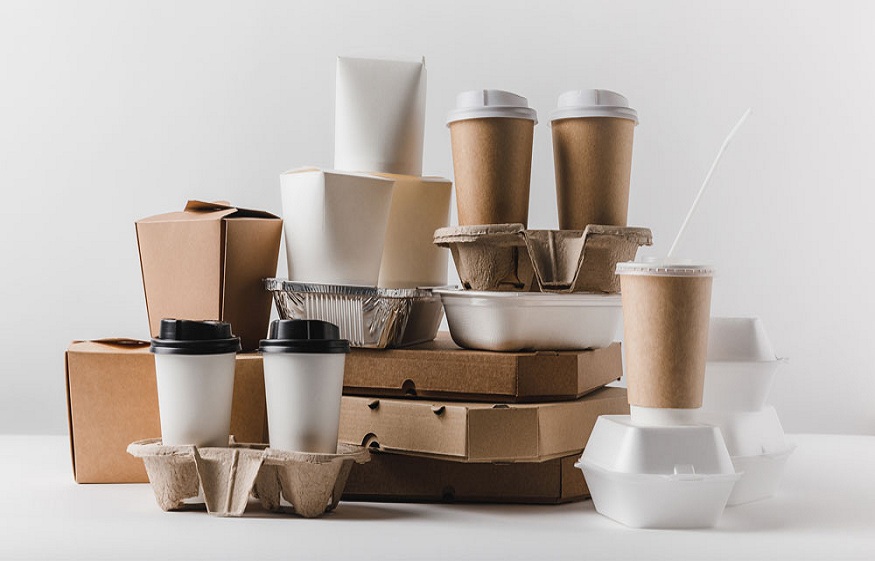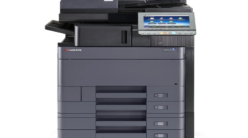
Food packaging is an essential factor in the food industry because it offers safety, and portability and is eco-friendly packaging. Primary functions of food packaging, in this context, include preservation of the outgoing/endorsed food items from contamination and the subsequent aspects of packaging storage, food shelf life, and food appeal. Switching through the years, food packaging product manufacturers have evolved from using traditional packaging materials that include papers and glasses among others to modern ones like plastics, biodegradable films and the like. Currently, the manufacturers are in a better place to work with dedicated packaging for every food product to meet the increasing demand for sustainability and innovation. This helps to preserve the quality of food, its freshness, and presentation and also serves the noble course of preserving the environment.
- The advantages of wholesale food packaging materials: In the food industry, the acquisition of food packaging supplies has now become friendly in terms of cost and has proven to be an ideal way to increase efficiency. Wholesale suppliers also offer bulk quantities where they provide packing requirements such as containers, wrappers, and boxes that are suitable for food products. Buying food packaging supplies in bulk makes it cheaper for the business to attain economies of scale and hence make huge savings yet the quality of the packaging material is not compromised. Further, wholesalers provide facilities for branded packaging, thus allowing businesses to refashion their logistics and packaging strategies. Besides cost control, wholesale purchasing also solves the problem of stock supply of packaging materials. Additionally, wholesalers always ensure they are up to date with trends in packaging and make the latest, eco-friendly ideas available for businesses to use.
- Flexible packaging materials as the new trend and its importance: Flexible packaging materials have lately been in high demand for some reasons, therefore enjoying considerable popularity in the past years. The flexible packaging material manufacturing Industry produces materials that can be flexible in use and include pouches, bags, with wraps. These materials are versatile and can protect the contents against external factors such as moisture, air and contaminants which make them suitable for use in packaging perishable foods. Furthermore, flexible packaging materials have the desirable attribute of being compact thereby safeguarding transportation as well as storage costs. Fortunately, this has made many manufacturers and consumers go for flexible packaging solutions due to the gains on the side of convenience and also on the side of preserving the environment.
- Advancements in food packaging technology: Technology has become a key factor in food packaging due to changes in the market trends where manufacturers have strived to adapt to market changes. Some of the key innovation potentials include the formation of smart packaging that uses sensors to track the freshness of food and temperature in real-time. Another new development is biodegradable and compostable ones meeting the increasing environmental needs. There are also new trends used by manufacturers in printing on the packages and others are considering how they can adopt these to create an attractive form of packaging which can create an image of the business while at the same time serving the purpose of providing the information including the nutritional value, and the duration for which the products should be consumed.
- Sustainability in food packaging: A rising phenomenon: There is growing concern about sustainable food packaging among manufacturers. The issues of plastic waste disposal and scarcity of resources call for packaging materials that are renewable, recyclable, and biodegradable. The current manufacturers specializing in flexible packaging materials are at the forefront of designing sustainable packaging solutions that will subdue wastage besides providing the necessary defence required in the food industry. Moreover, food packaging products manufacturers are coming up with packaging products that utilize minimal resources when being produced, hence promoting sustainability.
- Legal acts of food packaging: Food packaging is a highly regulated field and it involves several standards and policies to conform to while packaging food products. It is a requirement by the law that food packaging products must meet certain regulatory standards regarding hygiene, materials used during production, and labels to include. For instance, those items which come in direct contact with foodstuffs must be toxic while the manufacturer needs to pass through vigorous tests on the certification that the used packaging material will not in any way contaminate the foodstuff. There are regulations concerning the application of materials that can be discarded or recovered when the things are no longer needed. By adhering to these requirements, consumer safety is maintained, and the food sector is protected from reputational loss.
- Selecting appropriate packaging materials for foods: Choosing the right packaging method for different types of foods is a strategic process since it determines the quality, safety and appearance of the food to be packed. Classes of food packing may be classified according to the type and characteristics of the food product by its ability to be stored and to environmental factors that can affect it. For instance, fresh fruits and vegetables should be packed in such a way that there is some permeability for air circulation, while foods to be stored in frozen states need to be packed in materials that will not crack in extremely cold temperatures. Food packaging supplies wholesale provide a wide range of bulk packaging options to meet these specific needs. Various types of solutions required for packaging food products are offered by food packaging products manufacturers, who tailor their packaging based on the particular food type to reduce its vulnerability to spoilage or contamination. This ensures the optimal preservation of food while also meeting operational efficiency for businesses.
- The future of food packaging products and supplies: This trend of development in the food industry means that there will be an increased need for packaging methods in the future. Manufacturers are always looking for solutions for improving packaging materials to enhance their quality by being strong, eco-friendly and cheap. In the future, it can be predicted that the consumption of smart packaging food packaging products will be higher, especially solutions for fresh food availability. In addition, flexible packaging material manufacturers shall begin to find ways of providing environmentally friendly materials that will help in the reduction of packaging waste. The focus on packaging as a whole food supply will continue to be relevant given that businesses are always in search of ways to minimize their costs for the supplies they need. The future of food packaging is therefore bright with innovations and sustainability being the drivers with manufacturers being at the forefront.
Thus, it is essential to understand that the food packaging industry has been constantly evolving in recent years due to factors such as technology, sustainable development, and the choices of the target market. The market and technological advances exhibited by food packaging product manufacturers include smart packaging, and sustainable and environmentally friendly packaging materials, among others. A flexible packaging material manufacturer plays a pivotal role in producing versatile packaging solutions that cater to a wide range of food products while focusing on minimizing environmental impact. Additionally, manufacturers and wholesale flexible packaging material suppliers offer affordable and sustainable solutions to businesses, helping them meet changing global demands. The goal for the years to come will be to maintain a perfect blend of innovation, sustainability, and legal requirements to ensure the industry’s long-term profitability and environmental responsibility.





